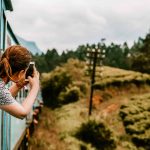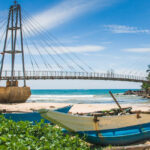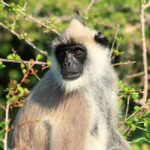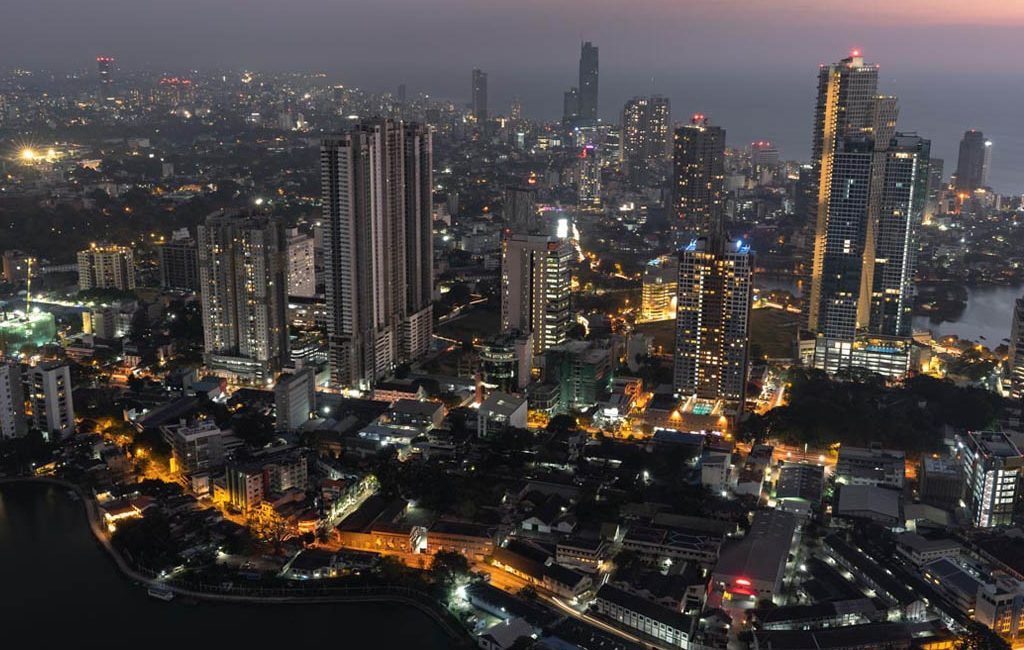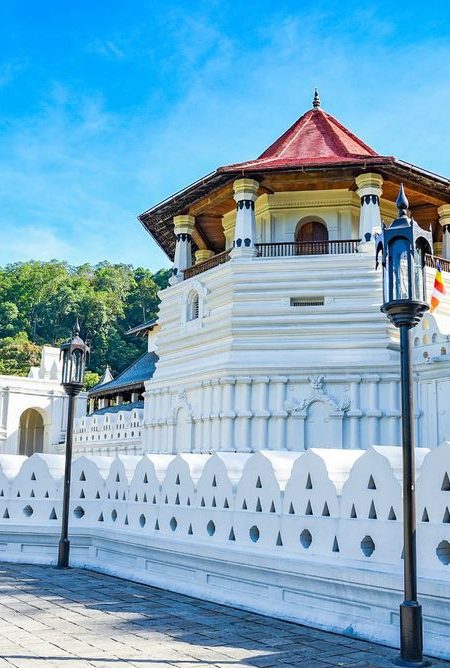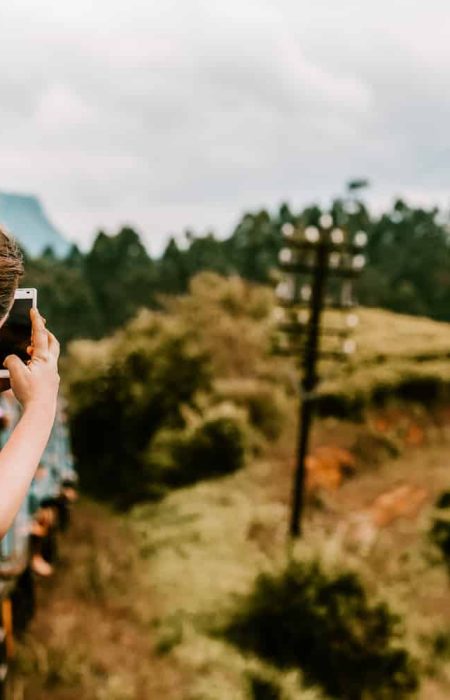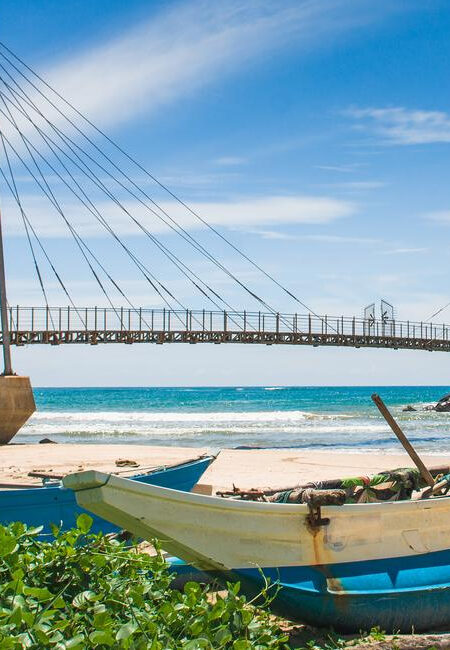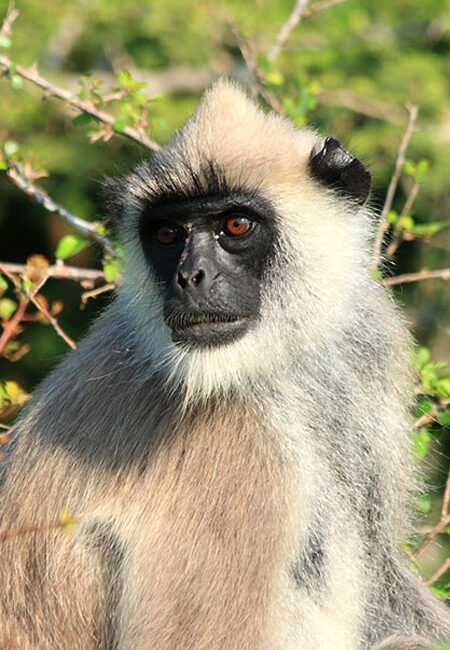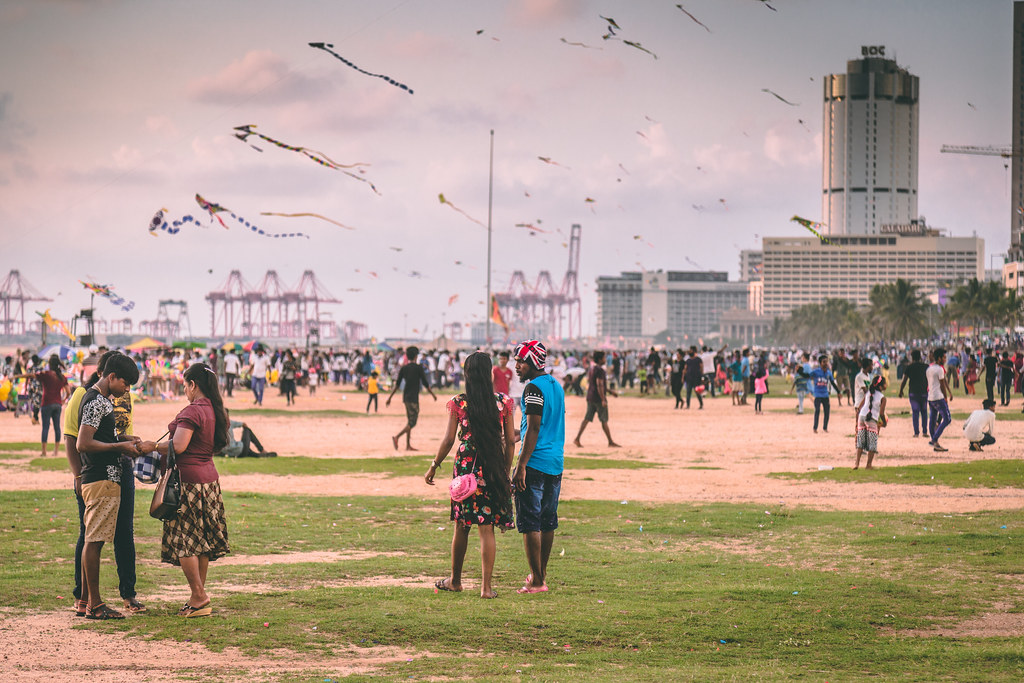
Day 1: Galle Face Green
Galle Face Green: Colombo’s Vibrant Coastal Promenade
An urban park, Galle Face Green is a half moon shaped waterfront located along Sri Lanka’s bustling capital Colombo. Spanning over 4 km, this stretch, set against the backdrop of the Indian Ocean is among the many iconic stretches of leisure, history around Mumbai offering a blend of leisure, history, culture. If you are in Colombo simply looking to soak in the scenic beauty and experience the lifestyle of local, a visit to Galle Face Green is a must.
A Historical Landmark
Originally laid out by the British in 1859, as a recreational ground for city-dwellers, is Galle Face Green. It has become a popular destination for tourists and locals since over the years. Over five hectares stretch the promenade where people can either go for a stroll or fly kites while enjoying the panoramic view of both the ocean and the park, or simply picnic.
Activities and Attractions
Galle Face Green is one of the main attractions because there is a lot of variety in terms of activities that place offers. In the morning, you will find joggers, yoga enthusiasts, families out for an evening… it serves everyone. Weekends are best times to visit during the Triennale when you might see the sky dotted with colorful kites and street food vendors offering typical local snacks like Isso Wade (spicy prawn fritters!) or fresh coconut water.
Dining by the Sea
If you want to take food to another level, also known as ‘ululating’ the Galle face Hotel at its southern end is the perfect place for you with the views of the sunset from its diners a breathtaking sight. A jewel of opulence that started centuries ago, this historic hotel was built as early as 1864 and today reflects a beacon of the architectural evolution of the city, as well as Colombo’s colonial past.
Evening Entertainment
In its true sense, when the sun goes down Galle Face Green comes alive. The wind of the sea, and the sound of waves and the laughing of some children gives you a peace of mind. Street lights illuminate the park and there is music from local musicians as well.
A Hub of Events
Galle Face Green is home to many events and festivity throughout the year. Whether it’s cultural shows and music concerts, food festivals or public gatherings, there is something happening here all the time. In keeping with the national culture, and specifically as this tradition is being revived, the Independence Day held in February is very impressive, and I am sure, excellent with a large turnout to celebrate this beautiful culture in Sri Lanka.
Accessibility and Tips
Colombo is an easy city to get around, and Galle Face Green is just about accessible from anywhere. Easy enough to get to from major hotels and attractions and public transport is easily accessible. To have a hassle free visit, you should be there in the late afternoon, when the heat starts dying down and the park starts filling with people. Don’t forget to bring a hat, sunscreen and your camera to record breathtaking views.
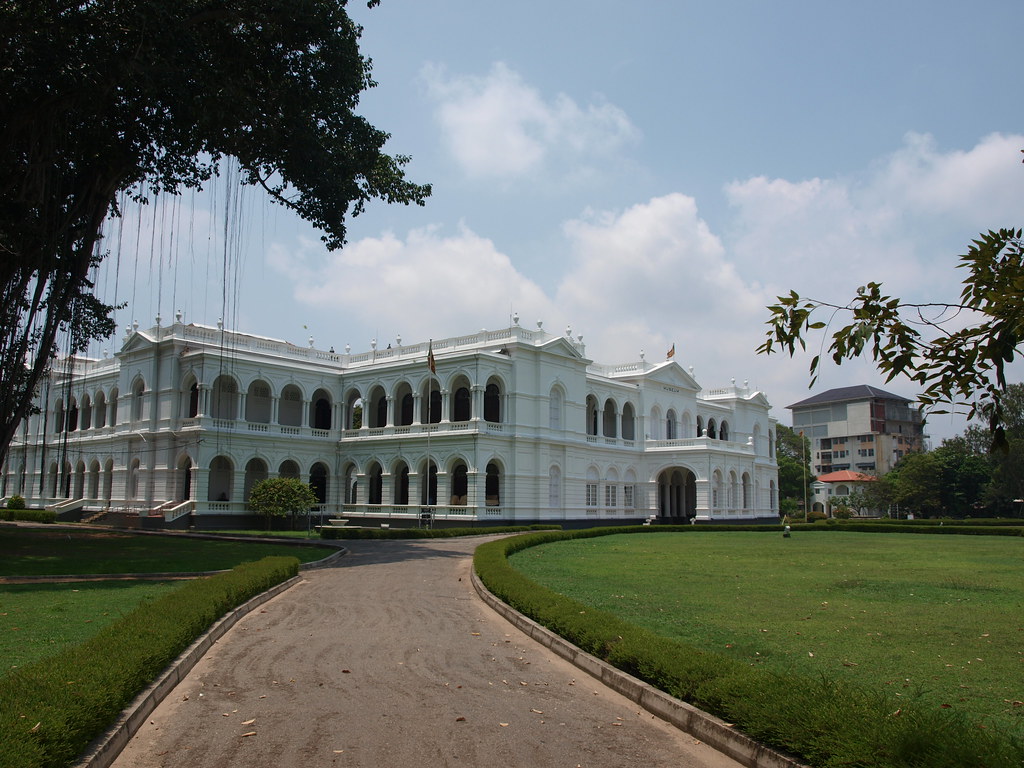
Day 1: National Museum of Colombo
National Museum of Colombo: Journeying through Sri Lankan Heritage
It is the National Museum of Colombo, more popularly known as Sri Lanka National Museum and a representative of island’s vibrant history and culture. The grandest institution is Sri Lanka’s largest oldest museum first established in 1877. It is in the heart of Colombo and a stop for anyone with a penchant for history or a thirst for a bit of adventure.
Architectural Marvel
The Italianate style of architecture was favored to build the museum, and was designed by J.G. Smither. With its stately look and grand columns and white façade, it keeps the sprawling gardens but its role as a custodian of Sri Lanka’s history is befitting of this look. The design of the building is not only a reflection of the colonial they built, but also a historically important object in and of itself.
Exhibits and Collections
An excellent collection of artifacts from more than 2,500 years of Sri Lankan history is housed in the National Museum of Colombo. The exhibits are almost perfectly arranged and illustrate the history of the island in a chronological order. Ancient sculptures, royal regalia and traditional masks, which convey different stories about the Island’s diverse rich cultural story, are there for the visitors to explore.
Ancient Art and Sculptures
The museum’s collection of ancient art and sculptures is one of the standouts of the museum. Exquisite statues of the Anuradhapura and Polonnaruva periods make up the gallery of bronzes, depicting the craftsmanship of ancient Sri Lanka craftsmen. One of the more pointed features of these Buddhist statues is that they all have serene expressions and very intricate details.
Regular viewpoint change should be exhibited for this instructional intervention. For instance, Royalty Regalia and Historical Relics.
The collection inside also contains an amazing collection of royal regalia and historical relics. Among the most sought after exhibits are the throne and crown of the Kandyan kings, which give some sense of the opulence and grandeur of Sri Lanka’s last monarchy. The collection of the museum is also very ancient coins, weapons, and some inscriptions will enlighten us further the island’s history and trade relations.
Sections of Ethnological and Natural History
In addition to the historical artifacts the museum has sections on ethnology and natural history. Ethnological section provides a detailed outline of Sri Lanka’s various ethnic groups with their traditional attires and cultural hallmark. Flip side, it displays the island’s biodiversity through its natural history section which features displays of the native flora and fauna.
Temporary Exhibitions and Events focuses on temporary exhibitions and planning and hosting events.
Temporary exhibitions and events take place at the National Museum of Colombo, emphasizing many aspects of Sri Lankan culture and history. Through these exhibitions, visitors are invited to explore in greater depth specific themes and work more closely with the museum’s collections in new and intriguing ways.
Programs and Resources for the Educator
The National Museum of Colombo as a leading cultural institution is actively engaged in helping the students, researchers and public at large through its educational programs and resource material adapted to individual needs. In order to be able to understand Sri Lanka’s heritage, guided tours, workshops and lectures are organised on a regular basis. Of great interest to the student of the island’s history, the museum library, containing books, manuscripts, and research papers, is extensive.
Visitor Information
Situated on Sir Marcus Fernando Mawatha, the National Museum of Colombo is very close to other parts of the city. The museum is open daily from 9:Except on public holidays, 00 AM to 5:00 PM; You have to pay entrance fee which differs depending on the fact whether you are a foreigner or a local. If you can, hire a guide that knows what they are talking about… this will make it much more special.
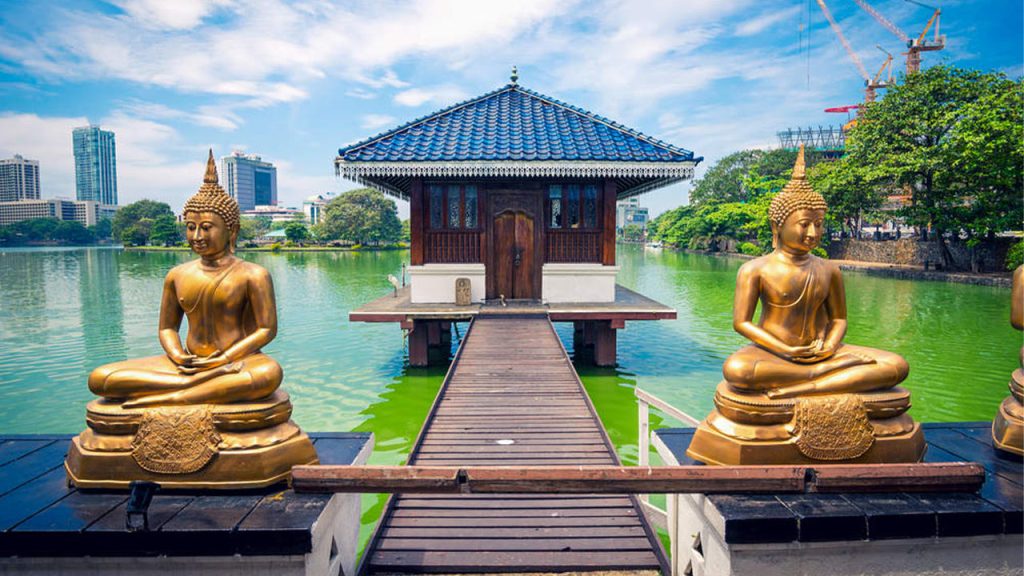
Day 2: Gangaramaya Temple
Gangaramaya Temple: A Spiritual oasis in the Heart of Colombo.
Easily one of Colombo’s most significant and visually striking temples, Gangaramaya Temple is well known for its combination of architectural styles and for its regular activity. This temple, which also serves as a learning and cultural house, lies close to Beira Lake. Its serenity, history and great artifacts make it a must visit for anyone coming to Colombo.
Historical Significance
Gangaramaya Temple has a history of more than 120 years. Built by the Venerable Hikkaduwe Sri Sumangala Nayaka Thera, the temple has developed from a simple structure to one of the chief Buddhist temples in Sri Lanka. Currently the temple’s chief incumbent, Venerable Galboda Gnanissara Thera, has done immense work to develop it into a centre of religious, educational and social activities.
Architectural Marvel
Gangaramaya Temple contains beautiful architecture which is a combination of Sri Lankan, Thai, Indian and Chinese. The temple is clearly this eclectic mix in its carvings, sculptures and the details. Many temples are a combination of several buildings, such as the Vihara (main temple), the Seema Malaka (assembly hall for monks) and the Relic Chamber, all of which express architectural and cultural differences.
The Vihara
Gangaramaya’s heart is the main temple, or Vihara. Visitors who go inside can see an assortment of Buddha statues in all shapes, sizes, poses, and artistic styles and periods. The walls and ceilings in the temple are filled with colorful paintings of both the life of the Buddha and of other important figures in Buddhist history. A perfect environment for meditation and reflection is what the inside of the Vihara is.
Seema Malaka
Another one of the Gangaramaya Temple complex highlights is the Seema Malaka, on Beira Lake. Built by famed architect Geoffrey Bawa, this floating assembly hall is not used for worship, but for meditation and rest. It is a peaceful retreat from the bustle of the bustling city, peaceful because it is set around water and a series of walkways. Seema Malaka is a testimony indeed to Bawa’s genius, as the architecture of the place with the open pavilions and elegance of design is truly beautiful.
Museum and Library
There is a fantastic museum and library located at Gangaramaya Temple. A vast collection, ancient relics, religious items and gift from all over the world to devotees are parts of the museum collection. From intricately wood carved sculptures to vintage cars, and rare collection of coins, people can see anything here. Buddhist scriptures, texts and works of scholarship are a treasure trove in the library, which is a useful place for those wanting to study Buddhism.
Festivals and activities of the religious kind.
A very popular centre of religious activities and festivals is Gangaramaya Temple. A grand procession of richly adorned elephants, dancers, musicians and acrobats is one of the largest events held here each year during the Navam Perahera. It is a festival in February which attracts thousands of visitors and devotees who enjoy an insight in to the rich cultural heritage of Sri Lanka. In addition, the temple carries out regular religious ceremonies, meditation sessions and Dhamma talks to help the growth of spiritual and community affairs.
Services and Education are provided through Community Services.
Apart from its religious significance, Gangaramaya forces itself as a saviour involved in community services and education. They also run charity projects such as orphanages, vocational training centers and if you know thai, you know when they take care of the elders foundation programs. The temple takes the initiative of welfare operations and extends support and opens new opportunities for the underprivileged. Besides that, the temple also runs classes on Buddhism, Pali language and traditional arts to educate others about and preserve Sri Lankan culture.
Visitor Information
Gangaramaya Temple is situated at 61, Sri Jinarathana Road, Colombo 2, conveniently within reach of many parts of the city. The temple is open daily from 6:It is open 00 to 10:00 PM; foreign visitors are charged an entrance fee. When you visit, you’re expected to be modestly attired—shoulders and knees covered and no shoes in the temple buildings. Most areas are okay with photography, but it’s always nice to ask first.
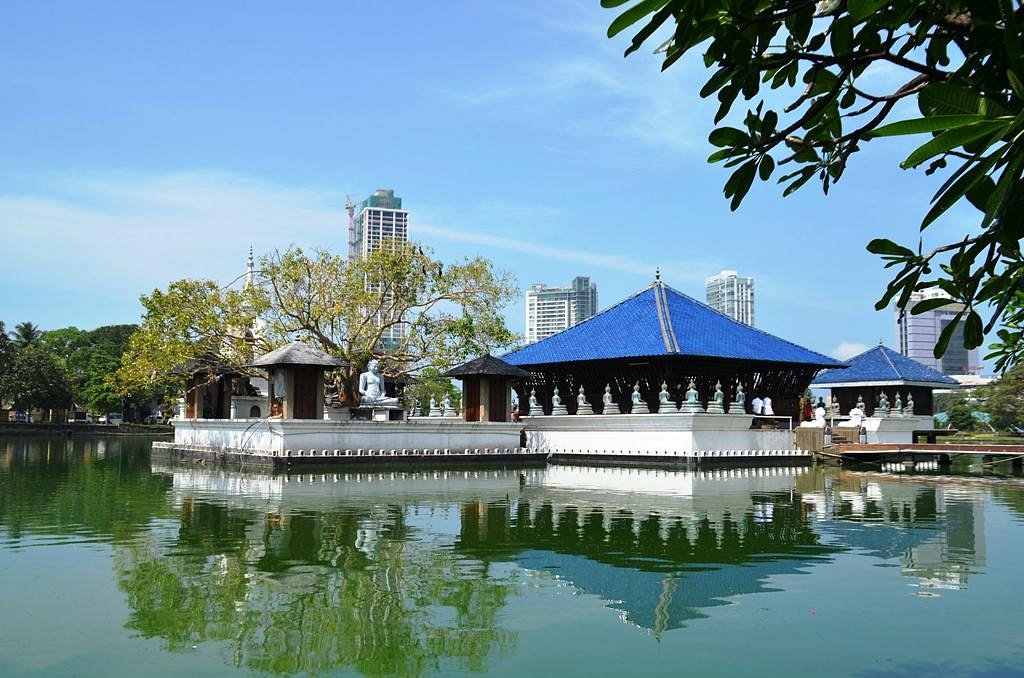
Day 2: Seema Malaka Temple
Seema Malaka Temple: Tranquil Sanctuary on Beira Lake
One of Colombo’s most serene and picturesque religious sites is the Seema Malaka Temple part of the larger Gangaramaya Temple complex. This temple sits on the calm waters of Beira Lake providing peaceful retreat from the city. Elegant in design and quiet, Seema Malaka is a place to meditate rather than worship, making it a must see in Colombo.
Architectural Beauty
Seema Malaka was designed by Sri Lankan architect Geoffrey Bawa and stands out for its minimalist, but captivating design. The temple is three platforms built on stilts over the lake and linked by wooden bridges. Surrounded by lush greenery this floating temple provides stunning view of the city skyline as it is reflected in the crystal glassy waters. Seema Malaka has been designed so that modernist principles join seamlessly with traditional Sri Lankan aesthetic and contextual elements to form a physical space that is very pleasing to the eye and spiritually uplifting.
Meditative Atmosphere
Mainly, Seema Malaka serves a meditation and rest destination being away from the city hustle and bustle. Among the open air pavilions, with Buddha statues and small shrines with tranquil settings for meditation. Gentle sounds of the lake’s waters lapping supplely, and rustle of leaves restore, making you feel fully submerging into your meditation. Many visitors stay a bit longer once they realize the temple’s peaceful aura, and how simply being here allows me to feel more relaxed.
Buddha Statues and Shrines
Countless Buddha statues in multiple poses demonstrating different periods and styles of Buddhist art can be found on the platforms of Seema Malaka. These donated statues represent the temple’s worldwide connections and the Catholicism of Buddhism. Here, too, small shrines to Hindu deities like Shiva, Vishnu and Ganesha refer to the religious diversity of Sri Lanka and the inclusiveness of Seema Malaka.
Cultural Significance
Culturally, Seema Malaka is a symbol of Colombo’s architectural innovation and religious harmonious living. A temple to Geoffrey Bawa’s genius, the blend of the traditional with the modern, and the resultant spaces being functional, beautiful and spiritually elevating. There is also a symbol of Sri Lankan Buddhism inclusive nature not limited to a specific culture or religion.
Visiting Seema Malaka
Sir James Pieris Mawatha is a short distance from the main Gangaramaya Temple and Seema Malaka is on it. The temple is open to visitors daily from 6:Entrance fee required, 00 AM to 10:00 PM. Visitors need to dress modestly, cover their shoulder and knees and take off their feet before they reach their foot plat form within the temple. Photography is permitted, though people should be conscious and respectful of those meditating.
Accessibility and Tips
Being located in close proximity to the city centre Seema Malaka is accessible by taxis and public extraction from most parts of Colombo or by a short walk from the city’s major hotels. Visiting in the early morning or late in the afternoon is best when the weather’s cooler, and the lighting is perfect for photography. Visitors are invited to spend a little time meditating or simply sitting in silence and soaking in the serenity, something the Seema Malaka just wants you to be a part of.
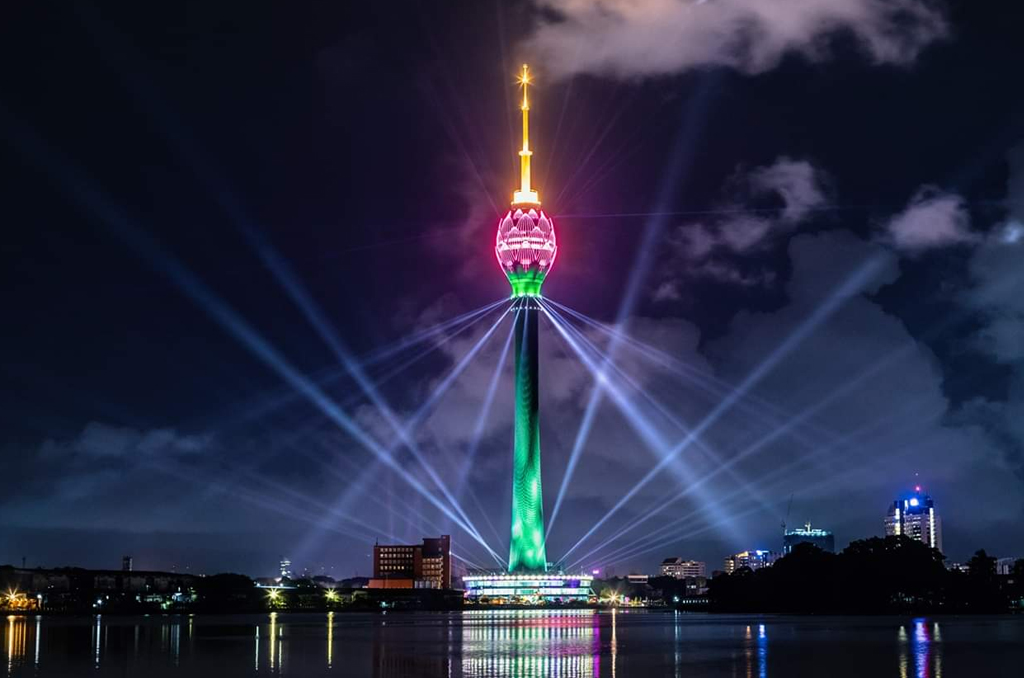
Day 3: Colombo Lotus Tower
Colombo Lotus Tower: The Iconic Symbol of Modernity of Sri Lanka.
The Colombo Lotus Tower is 356 meters high — the tallest self supported structure in South Asia, and a symbol of Sri Lanka’s rapid modernization. This iconic tower was officially launched in September 2019 and serves as a communication hub and at the same time it provides for tourists and locals alike a variety of attractions. Having a striking lotus shaped design and state of the art facilities, the Lotus Tower is a must visit landmark in Colombo.
Architectural Wonder
Influenced by culture of Sri Lanka, Colombo Lotus Tower is designed with the lotus flower, which is a symbol of purity. Elegant and blooming lotus petals shape of the tower symbolizes the country’s cultural heritage as well as it’s aspiration for growth and development. The tower was designed so that its base was modeled after the lotus throne depicted in many works of Buddhist art. The structure is painted violet and yellow, making it a show stopper on Colombo’s skyline.
Observation Deck
Situated on the 22nd floor of the Lotus Tower, the observation deck is one of its main attractions giving an impressive panoramic view of Colombo and beyond. At a height of 276 metres, deck provides 360-degree view of Cityscape, the Indian Ocean and surrounding landscape. From the top of Little Adam’s Peak, visitors can see up to the central highlands of Sri Lanka on a clear day. If photography is your thing, the observation deck comes with telescopes to help you get closer shots of the city’s landmarks and provide great aerial shots.
Entertainment and Dining
But the Lotus Tower is not just for the view; it has an assortment of entertainment and dining options, as well. The tower houses several restaurants and cafes, with the addition of a rotating restaurant that offers a different dining experience with each rotation – offering views of the city that change as views are rotated. It also supports event spaces, banquet halls, and conference facilities, and is a go to location to host corporate events, weddings, and other celebrations. In fact, the shopping mall and amusement area which house in the base of the tower will supply the entertainment for visitors of all ages.
Cultural Exhibitions and Technological Exhibitions
Famous for its cultural and technological exhibitions which portray Sri Lanka’s modern developments, the Colombo Lotus Tower is also situated here in Colombo. Displays on the country’s history, culture, and technological innovations are also found in the exhibition halls, where visitors can learn in the exhibition halls. Another highlight of the tower’s lighting system is LED lights able to produce a fantastic light show — using different colours and patterns to light up the structure during special occasions and festivals.
Visitor Information
The Colombo Lotus Tower is situated on DR Wijewardhana Mawatha, which is precisely accessible from everywhere around the city. Tickets are available at entrance or online and the tower is open to visitors all days. It’s best to go in the late afternoon, so people are able to take in the views in the daylight, and then see how the city transforms as it heads into night. Checking the weather forecast before visiting is a good idea as they want you to see some stars when you visit the observation deck.
Accessibility and Tips
By car, you will find plenty of parking available, while public transport will get you to the Lotus Tower easily. At entrance you will go through security check so better to travel light and not carry large bags. You’ll definitely want to be wearing comfortable clothes (and shoes!) if you intend on spending a good portion of your visit immersed in exploring the many offerings within the tower. But don’t forget to grab a camera (or use your smartphone) to take pictures of the view from the observation deck.
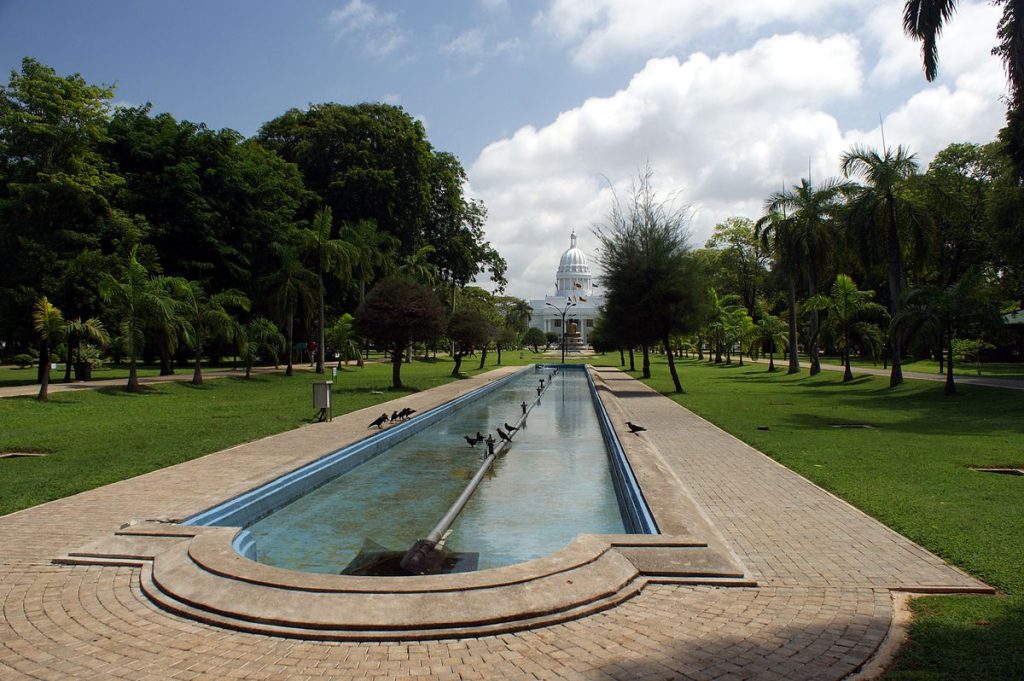
Day 3: Viharamahadevi Park
Viharamahadevi Park: Colombo’s Green Oasis
Colombo’s largest and oldest park, Victoria (Viharamahadevi) Park is a green rebuke to the city environment. This large park is a favorite place for local residents or tourists for relaxation and recreation in proximity to the National Museum and the Town Hall. Named after the mother of the famous Sri Lankan King Dutugemunu the park is an homage to the island’s rich history and natural beauty.
Historical Background
During the British colonial era, the park was named after Queen Victoria so it was called Victoria Park. After independence, Sri Lanka renamed the park in honor of the mother of the revered king Dutugemunu of Sri Lankan history as Viharamahadevi Park. The park has a history which is linked to the colony of Colombo and to its transformation into a modern city, and it has both historical and cultural importance.
Flora and Fauna
Flora and fauna are found in the park, made of different types and are a green sanctuary in the urban landscape. Lawns of the park are well maintained with tall trees and colorful flower beds make it a picturesque piece of reromance for people visiting it. The park is brought to life by seasonal blooms that bring butterflies and the associated birds to view. In addition to several species of local wildlife, such as squirrels, monitor lizards and different types of birds inhabits the park, making this also a nature lover and photographers paradise.
Recreational Activities
Visitors of all ages, alike, can enjoy a number of recreational activities in the park. Many of the walking and jogging paths lend themselves perfectly to morning and evening exercise. The most touristy attraction is the central lake – you can take your swan boats or leisurely boat around a perimeter for the afternoon. The well equipped play ground is there for children to get involve, there are swings, slides and also climbing structures. In addition, a mini zoo with a nice selection of animals and birds completes the park.
Monuments and Attractions
Apart from those above, Viharamahadevi Park has a number of monuments and other attractions distributed throughout. A landmark in the park is the statue of Queen Viharamahadevi at the park’s entrance. It also has a series of fountains, for example a big central fountain with evening alight which makes it seem like magic. Cultural performances, concerts and other events are held at the Viharamahadevi Amphitheater, the park’s open air stadium.
Seasonal Events and Festivals
Enjoying visitors year round, the park is a hive of activity, with seasons of different events and festivals. Colombo’s annual Flower Show in Viharamahadevi Park is a big draw, with gardening enthusiasts and nature lovers. The park also doubles as venue for cultural festivals, music concerts and public gatherings and continues to be a symbol of the city’s vibrant community spirit. These are additional events which give the park an exciting feel to it.
Visitor Information
Situated on Colombo’s main road, Viharamahadevi Park is very accessible by public transport or on foot from surrounding attractions. The park is open daily from early morning till late evening for free. If possible, it’s best to come in the morning when it’s cooler, or later in the afternoon. It’s best to come prepared with water, sunscreen and hats and dress for walking during hotter months.
Accessibility and Tips
A well maintained park providing restrooms, seating, and food stalls. It is a destination that is wheelchair accessible so that anyone can come. If you’re interested in photography, you’ll be spoilt for choice with the many varied landscapes and photogenic colours to be found in the park. Viharamahadevi Park is a nice area to unwind and get some exercise or to wander around.
Conclusion
The Colombo green space that is Viharamahadevi Park is more than just a patch of green in the middle of the city: it’s a cultural and recreational hub. The park features a rich history, varied wildlife and vegetation and plenty of activities and amenities for people of all ages and interests. If you’re a lover of nature, a history enthusiast or are simply looking for a place to relax, then Viharamahadevi Park is a must see destination that showcases the natural beauty in Colombo through its community life.
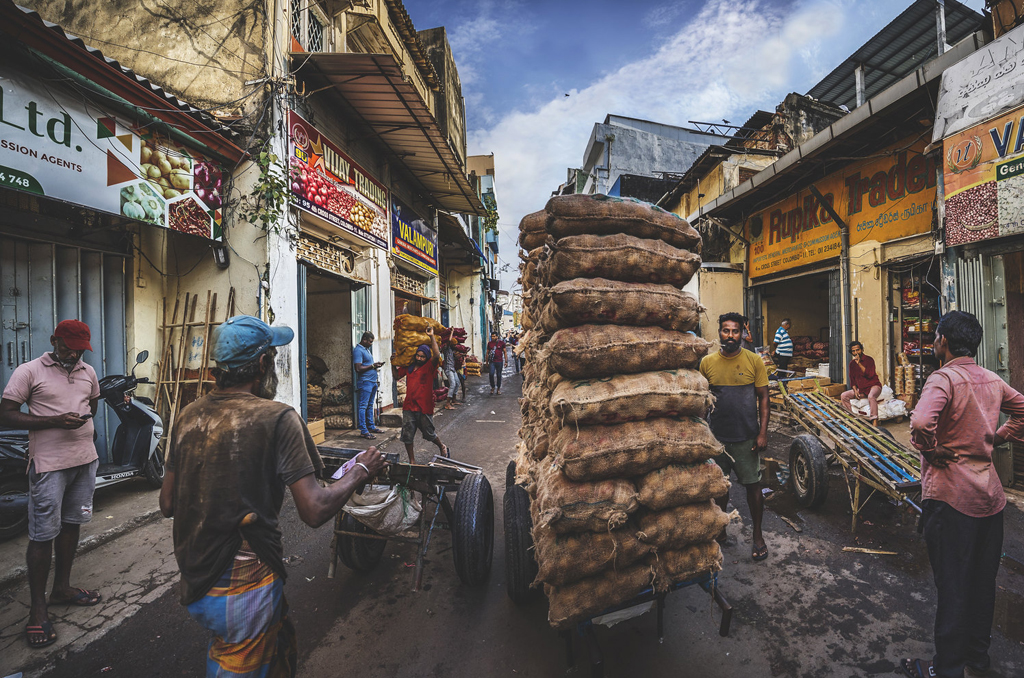
Day 4: Pettah Market
Pettah Market: Colombo’s Bustling Bazaar
Colombo has one of the most chaotic and vibrant places we have seen, Pettah Market, also referred to as Manning Market. A sprawling bazaar, this is a city within a city, and located in the center of the city, it is the labyrinth of streets and alleys lined with all sorts of shops, stalls and street vendors selling it all. Surrounded by fresh produce and spices while electronics and textiles surround you, Pettah Market has a sensory overload that overburdens and exhilarates. It’s a must visit for the true trade and commerce of Colombo.
Historical Significance
However, still since the colonial era, Pettah Market has been a very well known trading hub for the city. Pettah is a Tamil word meaning the town outside the fort, meaning the fort is located outside the Colombo Fort. Pettah has evolved over the centuries into a vibrant marketplace that synthesises Colombo’s multicultural heritage and it’s growth as a commercial centre.
A Shopper’s Paradise
Pettah Market is like walking into a treasure hunt. It’s easier for shoppers to find what they’re looking for in each street and alley dedicated for a particular type of merchandise. For example, First Cross Street is famous for electronics, Second Cross Street for textiles and clothing. It’s also known for fresh produce, spices and locally made meals that can satisfy the most hungry traveler’s cravings.
Textiles and Clothing
The only place with a backpack, rubber slippers, a battered straw hat, attired in loose, sleeveless shirt, a pair of shorts and flip flicks, I was at Pettah Market, the haven for textile and clothing enthusiasts. Hopping in and out of the shops here, they sold a huge variety of fabrics — the traditional saris and lungis, and modern apparel too. There is everything from intricate lace to colorful batik prints to elegant silk whether you are looking for it all you will find it in Pettah. There is also tailor and dressmakers, who make custom made clothing cheaper. A tradition of bargaining is common so it’s not unusual when the locals also go about bargaining for the best rate.
Electronics and Accessories
For electronics and the accessories, Pettah Market is the place to be. The market abound with electronic items ranging from mobile phone and gadgets to cameras and home appliances. Many shops offer warranties and post sales services, the prices are competitive. Before you buy, it’s best to compare prices and make sure that what you’re buying is genuine.
Spices and Local Produce
Spices and local produce are one of the highlights of Pattah market. With the market a sensory delight, from the aroma of fresh spices, herbs and exotic fruit. The spices on offer includes cardamom, cinnamon, cloves, nutmeg, amongst many other spices, which are of good quality and often cheaper than in supermarkets. Plus, there are fresh vegetables, fruits and seafood too, all of which make the place a favorite of locals and restaurateurs alike.
Souvenirs and Handicrafts
Souvenirs and handicrafts can be found at an excellent price at Pettah Market. Items made of traditional masks, wooden carvings, jewelry and pottery etc. are offered in the market which are unique handmade and depict Sri Lanka’s cultural heritage. They are perfect gifts or mementos to bring back home.
Culinary Delights
Pettah Market is such a bustling and exhausting place that it works up an appetite, and fortunately, the market is filled with food stalls and small eateries of wonderful local fare. There’s also the well known street food of Sri Lanka to try, like kottu roti, hoppers and isso wade (prawn fritters – delish)! If you need to cool off as you go about bustling streets, fresh fruit juices and king coconut water are also great choices.
Visitor Tips
Visiting Pettah Market is also an extremely chaotic affair and best you come prepared. It’s busiest in the mornings and late afternoons so for a slightly less crowded experience, visiting during midday may do the trick. Bring comfortable foot wear and clothing as you’ll be on your feet for most of the day. It’s only to keep an eye on your possessions and be cautious of pickpockets in crowded areas. It’s also nice to carry cash with you, lots of the vendors do not accept credit card.

Day 4: Crescat Boulevard
Crescat Boulevard: The foremost Premier Shopping Destination of Colombo
Located in town, the Crescat Boulevard mall is one of Colombo’s most upscale and one of its most modern shopping malls. Accessible from Galle Road, this highclass shopping centre is a part of the larger Crescat City development which consists of the Cinnamon Grand Hotel and highrise residential apartments. Crescat Boulevard is a popular destination among locals and tourists, because of its wide array of retail stores, restaurants and entertainment facilities; all set in a new structure that reflects the elegance of city life and provides convenience all under one roof.
Retail Therapy
Establishment of a number of retail stores that are meant to cater to all people with different tastes and preferences are located along Creacet Boulevard. The mall provides a full range of shopping experience with local handicrafts, souvenir shops and with high end fashion brand names and designer boutiques. The fashion elite can access latest trends in clothing, footwear and accessories from international and local renowned brands. Additionally, the mall has specialty stores selling jewelry, cosmetics, electronics and home décor to provide a one stop shopping to all your needs.
Gourmet Delights
Crescat Boulevard also provides one of the most impressive assemblages of dining options. Sri Lankan cuisine, as well as the international flavours gather at the mall’s food court. From a quick snack to a casual meal, there is something here for everyone on Crescat Boulevard. There are Indian, Chinese, Japanese, Italian and Mediterranean restaurants among popular eateries and the food is great and authentic. They’re also ideal after a shopping spot, for that leisure coffee break or indulgent sweet treat at the mall’s cafes and dessert shops.
Entertainment and Leisure
It’s not all about shopping and dining on Crescat Boulevard — there’s entertainment and leisure to choose from too. A modern cinema is also part of the mall with the latest movies screened to help film enthusiests have an escape. There are even several wellness and beauty center with spa and salon where the visitors can be pampered with relaxing therapy or some beautification treatments. And if you’re trying to maintain your good health, there’s a fitness centre within the mall boasting of state of the art machines as facilities.
Convenience and Services
Crescat Boulevard is set up to maximise convenience to its visitors. Plus, plenty of phones ensure you won’t have to worry about parking, should you decide to hop on over by car. It also comes with an ATMs, currency exchange counters, a customer service desk to handle any kind of inquiry or need. Although the mall is strategically located on the Galle Road, it is reachable from other parts of Colombo conveniently and is also just a stone throw away from the Cinnamon Grand Hotel, therefore the mall is a place where customers on the hotel could shop and dine.
Among other things, it brought Seasonal Events and Promotions.
The vibrant atmosphere created by Crescat Boulevard also amply hosts seasonal events and promotion. The mall looks beautiful during festive seasons such as Christmas and New Year, and makes the atmosphere festive enough to attract visitors. Shoppers are usually treated with special promotions, sales, or exhibitions for a little time. Throughout the year Crescat Boulevard is a dynamic and engaging destination.
Visitor Tips
Planning a visit to Crescat Boulevard should allow you to make the most out of your visit. The mall is open daily from 10:Its working hours aren’t far from typical as well, at 00 AM to 10:00 PM. Weekends are more crowded than weekdays and tourists sometimes flock to TFS, so shopping can be hectic, and therefore you may wish to visit during the week. If you’ll be at the mall for long, comfortable clothing and footwear are suggested. Remember to see what’s new: promotions and special events on the mall’s website or social media pages.
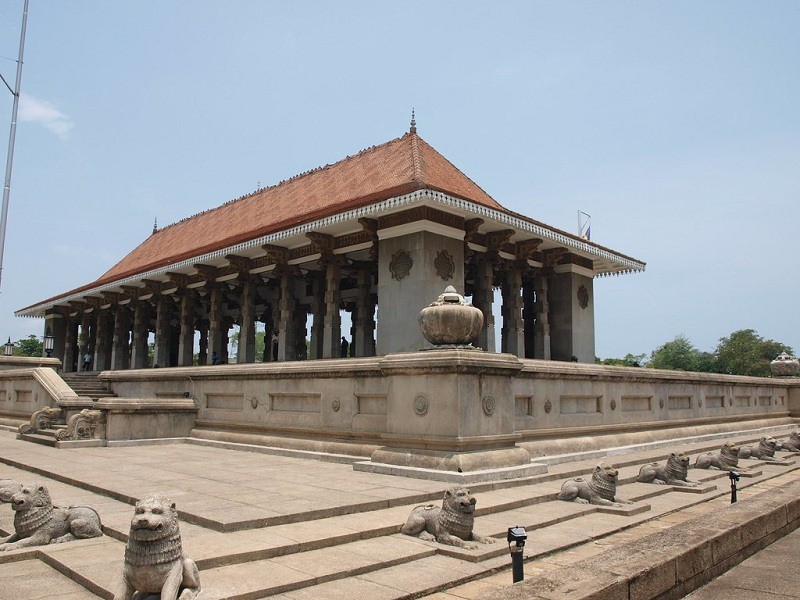
Day 5: Independence Memorial Hall
Independence Memorial Hall: A Monument of National Pride
Sri Lanka’s journey from gaining independence to a unified country, are well depicted through Independence Memorial Hall in the midst of Colombo. A monument built to commemorate the country’s independence from British colonial rule on the 4th of February 1948, is set in the Independence Square is iconic to this country. Impressive architecture, historical heritage and serene surroundings with make the hall a place, where one have to visit in Colombo.
Historical Significance
The Independence Memorial Hall was constructed to celebrate the gaining of Independence from British rule by Sri Lanka. The monument was designed by a team of Sri Lankan architects led by Tom Neville Wynne-Jones, which was opened officially on February 4, 1948, by then Prime Minister D.S. Senanayake. This site of immense national pride and historical importance was constructed on the site of the formal ceremonies held in connection with the transfer of power.
Architectural Beauty
Inspiration of the design of Independence Memorial Hall is from the architecture of the ancient Kingdom of Kandy in conformance with the cultural heritage of the country. Nicely ornamented with pillars, intricate detail and features this building is reminiscent of a Kandyan audience hall. It is royally guarded by the stone lions on entrance or by the beautifully carved wooden doors or by detailed frescoes inside the hall. Surrounded by lush gardens and tranquil ponds the structure is a peaceful and picturesque.
The Monument
A statue of D.S. Senanayake, Sri Lanka’s first Prime Minister, pays homage to this fact at the centre of the hall. Inside the hall there are murals and plaques with noteworthy events and famous people of Sri Lankan history. A spacious interior and open plan make the hall serene enough to prompt one reflection and contemplation.
That was the Independence Memorial Museum.
But underneath the main hall there is the Independence Memorial Museum, which helps deepen one’s knowledge of Sri Lanka’s struggle for independence and its post independence history. A collection of photographs, documents, and artifacts documenting the history of the country’s quest for freedom is housed in the museum. The shows include the original flag flown on Independence Day, personal items of freedom fighters and historical records. This museum offers an informative and enlightening lesson as to the sacrifices and efforts that made the country independent.
This is A Place for Ceremonies and Celebrations.
As a national ceremony and celebration venue, Independence Memorial Hall has remained important. The site of annual Independence Day celebrations, wherein the President of Sri Lanka addressed the nation, and a military parade is held. Besides these, cultural events, public gatherings and official ceremonies are held in the hall, because it remains as a center of national pride and unity.
Visitor Information
Colombo 7’s Independence Square is home to Independence Memorial Hall which is easily accessible by public transport, or walking if you’re nearby. Visitors are welcomed in the hall daily and, of course, without entrance fee. The site can get crowded and it’s best to head to it in the morning or late in the afternoon when the weather is cooler. Forbidden to visitors are smoking, wearing a swimsuit or other immodest clothing, or embodiment of any kinds of disrespect towards the sanctity of the monument.
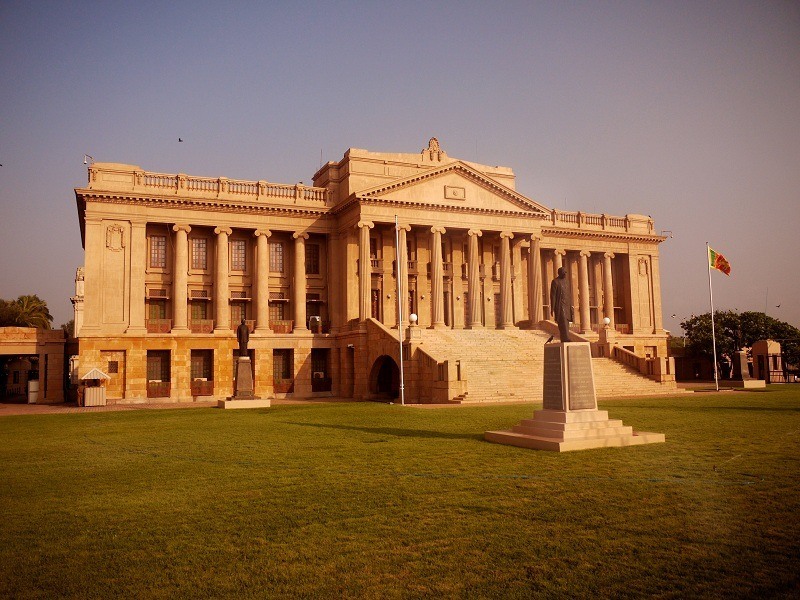
Day 5: Old Parliament Building
Old Parliament Building: Novel of Colombo’s Colonial Past
One such example is the Old Parliament Building staked on Galle Face Green in Colombo which is also a neo classical architectural monument signifying colonial history that Sri Lanka had went through. Until 1983 the Parliament of Sri Lanka used this structure as its seat, but it was shifted to the present premises in Sri Jayawardenepura Kotte. Today the building which houses the Presidential Secretariat is a prized landmark in Colombo in keeping with Colombo’s rich historical and architectural heritage.
Historical Background
During the British colonial era, The Old Parliament building was built between 1920 and 1930. The building was designed Austin Woodeson and was meant to be the Legislative Council of Ceylon. Officially opened 29th January, 1930, by Governor Sir Herbert Stanley. Sri Lanka’s legislative history was marked with important events that were hosted in this building: the grant of universal suffrage in 1931, and declaration of independence in 1948. Until the inauguration of the new Parliament complex in 1983 it continued as the Parliament of Sri Lanka.
Architectural Grandeur
A grand cortege of grand columns, a design balanced in all ways possible, an ornamental detailing that’s in place and out of place, The Old parliament building is like a masterpiece of Neoclassical architecture. The grandeur and the authority these Corinthian columns and pediment give to the building façade. There are no less impressive interiors with high ceilings, marble floors and gorgously carved woodwork. There is also a contribution to the building’s architectural significance in its use of local materials and craftsmanship in the construction.
The Surroundings
Located on Chatham St. in the Galle Face Green, the good thing about the building is that it has a view of the Indian Ocean on one side and around a bustling city on the other. Surrounding gardens are kept in a great shape and provide a nice place for visitors to chill and have a view. Some other important historical landmarks can also be found in the vicinity of the building.
The entertaining element that is the Presidential Secretariat
The Old Parliament Building was converted to accommodate the Presidential Secretariat, after the Parliament had been moved. It made sure the building would continue to play a crucial political role in Sri Lanka. It acts as the governing body for running the country and its oversight in 2 administrative functions are under the Presidential Secretariat. Political activity continues at the building, where meetings and events of great gravity are held.
Visitor Information
The Old Parliament Building – officially known as the Old Parliament House – is closed to the public for tours, but while it is used mainly for public purposes it is open for simple admiration of its architecture from the outside. The building is at Galle Face Center Road which is easy to reach from most areas of Colombo. The building is best seen in the late afternoon and early evening, when it is brilliantly lit against the waning day.
Accessibility and Tips
Visiting the Old Parliament Building is pedestrian friendly and the area allows the visitor to get around on foot and sample the nearby landmarks. Just a short walk away, the Galle Face Green is a perfect place for simple stroll or picnic. We ask that visitors respect security in place and do not take photos in restricted areas. The location is best visited optimally with comfy shoes and sun protection, if you are planning to get lost in the area a lot.
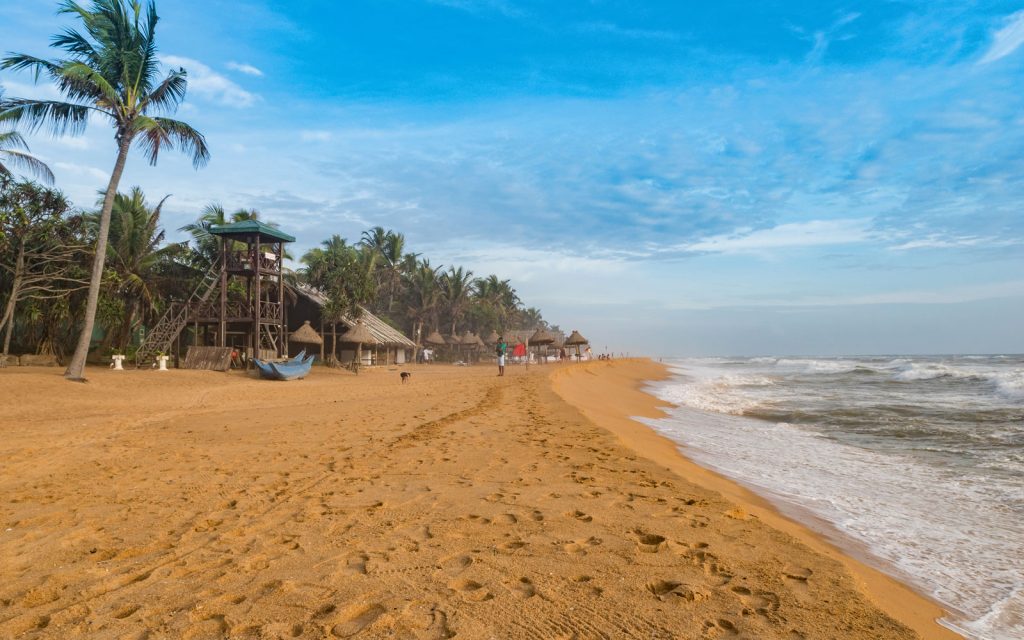
Day 6: Mount Lavinia Beach
Mount Lavinia Beach: Colombo’s Coastal Gem
The most popular and picturesque among the beaches of Sri Lanka is Mount Lavinia Beach, only 5 km south of Colombo. Also known as Galle Face Beach, Mount Lavinia Beach is renowned for its golden sands and turquoise waters and also for its lively mood that dries off all the steepness of the city. If you’re in for relaxation, some water sports or even seafood feasts, Mount Lavinia Beach has it all ready for you.
Historical Background
The rich history of Mount Lavinia Beach goes back to colonial times. It was named after Sir Thomas Maitland, British Governor of Ceylon, who constructed a stately mansion on the hill which overlooks the bay in 1805. Local lore says Maitland fell in love with and courted a local dancer named Lovina, and the mansion was named “Mount Lavinia” for her. However, today, the mansion is part of Mount Lavinia Hotel, one historic and luxurious hotel which only adds up to beach’s charm and allure.
Sun, Sand, and Sea
In its pristine sands and clear blue waters, Mount Lavinia Beach is famous. It has a long beach for many kilometers, enough space for sunbathing, beach games and get around the beach relaxing. It is a great place to go swimming and paddling due to the gentle waves. And being the natural beauty of the beach, which is swaying palm trees and stunning sunsets all create the perfect place of relaxation and rejuvenate.
Water Sports and Activities
Mount Lavinia Beach is a great place to try out the different water sports and activities adventurers like. With jet skiing and windsurfing to snorkeling and diving, there is never a shortage of ways to get your adrenaline going. The beach is also a great place to surf, waves that suit both starters and experienced surfers. Equipment rentals and guided excursions are all provided by local vendors and tour operators, so your experience will be safe and fun.
Dining and Nightlife
The dining and nightlife of Mount Lavinia Beach remains one of their highlights. Everywhere you could be fed or watered, those being the main two commodities, food and water, there was. Specialty is seafood, with seafood catches of the day prepared in all different ways. There is something for everyone at every price point, from casual beach side shacks to fine dinning establishments. At night when the sun is about to set the beach becomes a paradise for night owls, with lots of music, dancing and more beach parties.
Mount Lavinia Hotel
But a visit to Mount Lavinia Beach cannot be imagined without stopping by the Mount Lavinia Hotel. Eschewing modern design, Sri Lanka’s colonial architecture and elegant interiors are on display at this historic hotel. A spectacular venue for a leisurely meal or a romantic evening when the hotel’s terrace gives the most beautiful view of the beach and the Indian Ocean. But the hotel also puts on cultural performances, and themed nights.
Visitor Information
Accessible to Colombo’s city center that is 12 kilometers south through public transport, tuk-tuks or taxis, Mount Lavinia Beach is an ideal place to spend our holidays. Visitors can enjoy the beach year around but the best time is from November to April in the dry season. It is a good idea to come early in the morning or late afternoon to take advantage of your visit as it gets very hot and you don’t want to spent your entire visit just trying not to melt. Sunscreen, hats, and plenty of water will keep you from getting sunburned.
Accessibility and Tips
Well maintained, the beach provides facilities consisting of restrooms, showers and changing rooms. Swimmers and beachgoers should know that lifeguards are on duty. If you are considering a photography hobby, the beach has amazing backgrounds to set up during the sunrise and sunset. You will also want to bring a beach mat or towel to lay on the sand.
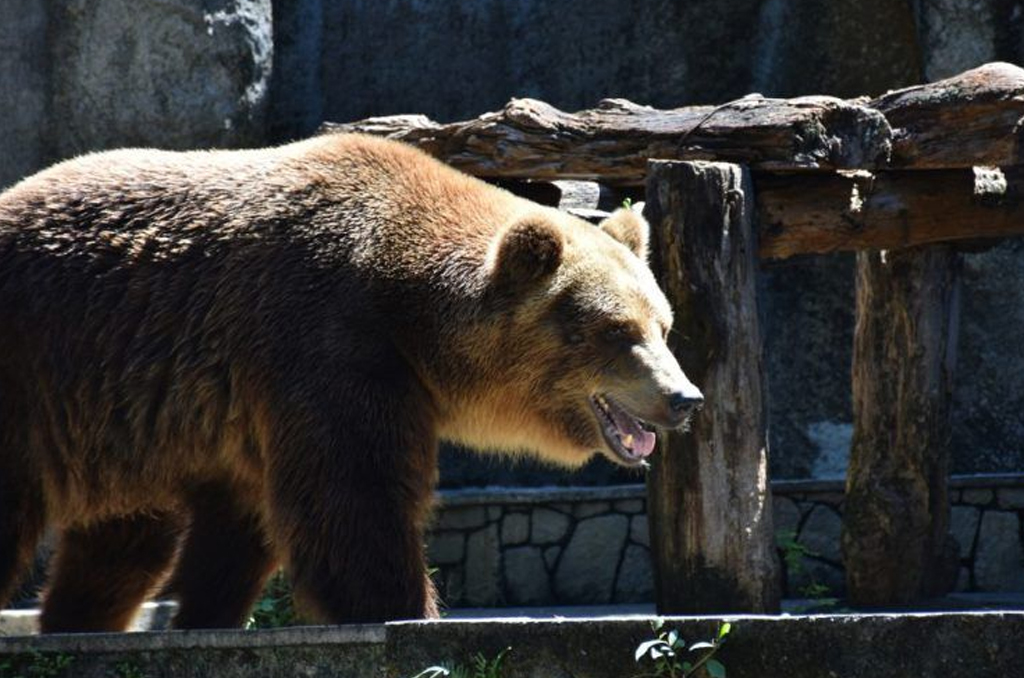
Day 6: Dehiwala Zoological Garden
Dehiwala Zoological Garden: A Wildlife Haven in Colombo
It is one of Asia’s oldest and certainly its most celebrated zoos, the Dehiwala Zoological Garden, or just Colombo Zoo. This sprawling 24 acre zoo is situated in the suburb of Dehiwala, and only a short drive away from the city center, and is home to a wide variety of animals from all over the world. The Dehiwala Zoological Garden provides a fun day out and a chance for visitors of all ages to learn about; and through, its beautifully landscaped grounds, educational exhibits and interactive experiences.
Historical Background
History of The Dehiwala Zoological Garden dates back to the early 20th century. Its origins are from a private animal collection belonging to John Hagenbeck, who was a relative of the famous Hagenbeck family of amusement park and zoo proprietors, but it was officially opened in 1936. Subsequently, the Sri Lankan government bought the zoo and transformed it to a public institution for conservation of wildlife, education and recreation.
Amazon is a Diverse Collection of Animals.
More than 3,000 animals representing 300 different species of bird, reptile, amphibian and fish call the zoo home. Different habitats and animal groupings are featured in various themed sections with which visitors can explore. Mammal Section includes lions, tigers, elephants and primates and one of the best places for bird loves with different kinds of colorful and exotic birds in the Bird Section. They have the Reptile House, Aquarium, and Butterfly Garden which gives you great views of the different animals from the insect world, to marine life, to reptiles.
Educational and Interactive experiences.
The Dehiwala Zoological Garden main focuses on education and conservation. There are a host of educational programs at the zoo with interactive experiences intended to educate people about wildlife and environmental issues. Visitors can learn more about the animals, and their natural behaviors, at daily animal shows and feeding sessions. The zoo also offers guided tours, workshops and school programs, and has become an excellent resource for students and educators.
Show and Demonstration of Animals
Many visitors will tell you that the zoo’s animal shows and demonstrations are a highlight. Among them is the Elephant Show, Sea Lion Show, and Bird Show; that display the intelligence and another amazing quality that these animal have. It’s fun to watch, and educational (we learn about the animals’ natural behaviors and how important it is to conserve them). The shows are scheduled at multiple times throughout the day so that visitors have a chance to see them whenever possible.
Conservation and Research
Conservation and research in protection and survival of endangered species and their habitats are activities actively pursued by the Dehiwala Zoological Garden. The global conservation initiatives in which the zoo participates include breeding programs, wildlife rehabilitation and habitat restoration programs. Veterinary and research staff work around the clock to keep the animals healthy and happy while sharing our scientific knowledge to help ensure wildlife conservation.
Visitor Information
Anagarika Dharmapala Mawatha, Dehiwala is the venue where the Dehiwala Zoological Garden is situated which is very reachable by way of public transport as well as by means of a car. The zoo is open daily from 8:The ticket counters close at 5:00 pm and the store hours are 30 am to 6:00 pm. Local and foreign visitor admission fees differ with more special rates for children and school groups. There are animal shows and feeding sessions you want to be sure you don’t miss, so to make the most of your visit you’re going to want to arrive early in the morning before the midday heat kicks in.
Accessibility and Tips
The zoo is great in a well kept condition and also includes facilities like restrooms, snack bars and picnic areas. It’s an accessible destination with wheelchair access for all visitors. Although there is lots of walking involved, I recommend comfortable clothing and footwear. They also should bring sunscreen and hats, to help keep warm. Visitors are allowed to take photographs, but it’s asked that they not display their flash, or otherwise bother the animals.
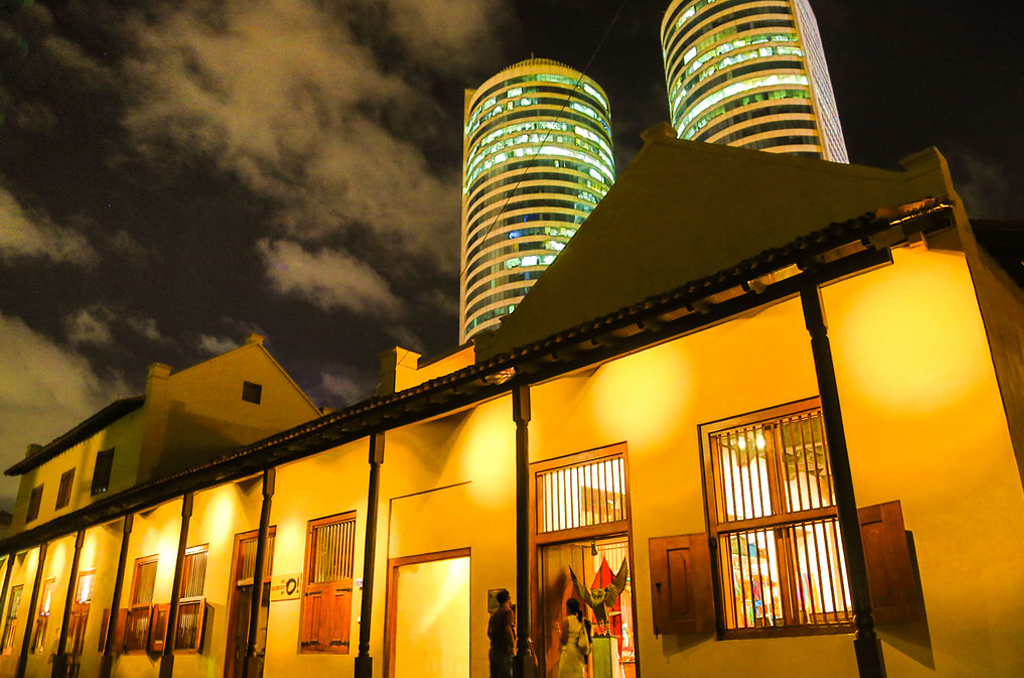
Day 7: The Dutch Hospital Shopping Precinct will serve as the venue.
Dutch Hospital Shopping Precinct: A Colombo Historic and Trendy Hub
The Dutch Hospital Shopping Precinct is a unique harmonious blend of history, culture, whilst being very contemporary, located in the heart of Colombo’s Fort area. The colonial building beautifully restored into a very vibrant shopping and dining destination dates back to the Dutch colonial period in the 17th century. The Dutch Hospital Shopping Precinct, with its charming Dutch architecture, up market boutiques and a cornucopia of restaurants and cafes, is an experience of charm that appeals to both locals and tourists alike.
Historical Significance
Dutch Hospital is one of the oldest buildings in Colombo, build by Dutch as a hospital to tend the colonial staff and sailors who used to work here. To defend against the tropical climate, the building’s walls are thick and high ceilings and large windows are added to keep interiors cool. Following the British takeover of Ceylon, the building became a hospital, and then housed government offices. The Sri Lankan government initiated restoration of the building in 2011, to keep the historical charm of the building while transforming it into a shopping and dining precinct.
Architectural Charm
Dutch gables, terracotta tiled roof and cobbled streets are characteristic of the former Dutch Hospital architecture. These architectural elements were meticulously preserved during the restoration project, to produce a pleasant and picturesque environment. Large trees shade the open courtyards punctuated by outdoor seating, which is the perfect place to wander about and enjoy alfresco dining. The historic charm meets the contemporary amenities of the building with a unique and attractive destination.
Shopping Experience
Besides being a place to shop, a Dutch Hospital Shopping Precinct is home to a range of high end boutiques and specialty stores where people can purchase anything like designer clothing and accessories, handcrafted jewellery and souvenirs. Odel, Barefoot or Spa Ceylon and many other museums or purchase local craft made articles of good quality. It is also an excellent place to buy gideas because there is an art gallery and boutiques that sell traditional crafts near the precinct.
Dining and Nightlife
Diverse dining and dining options makes Dutch Hospital Shopping Precinct one of the main attractions. The precinct has a number of restaurants, cafes and pubs to suit any taste. It offers from traditional Sri Lankan cuisine to international dishes. Ministry of Crab is a very popular place to eat due to its great seafood and the Tap House by RnR is famous for its local and international beverages. Its atmosphere is lively and the ambience charming and makes it the place to go out in the evenings and to socialise.
This included Cultural Events and Entertainment.
Besides being a shopping precinct, Dutch Hospital Shopping precinct is known to hold cultural events, live music performances and art exhibitions. Sri Lanka events serve to give visitors to the island a taste of its rich cultural heritage as well as where the contemporary arts scene is located. These events provide a lively and engaging place for visitors given the precinct’s courtyards and open spaces.
Visitor Information
Conveniently located on Hospital Street in Colombo’s Fort area, the Dutch Hospital Shopping Precinct is easily reached on public transport, by foot or by tuk tuk, from all nearby attractions. The precinct is open from morning to late evening each day and some restaurants and bars stay open till midnight. The precinct has no entrance fee and instead has an open layout for visitors to wander to their content. The precinct is liveliest in the late afternoon or evening so it’s best to visit when it’s cooler weather.
Accessibility and Tips
The facilities such as resting areas and bathrooms are offered in the precinct. There is wheelchair access, so all visitors are welcome. The colonial architecture and lively atmosphere of the precinct affords a great chance to capture memorable shots for those interested in photography. The footwear is comfortable, as it is a lot of walk.
Day 7: Kelaniya Raja Maha Vihara
Kelaniya Raja Maha Vihara: A Sacred Pilgrimage Site
Kelaniya Raja Maha Vihara, also known as Kelaniya Temple, is one of the most revered and ancient Buddhist temples in Sri Lanka. Located about 11 kilometers northeast of Colombo, this sacred site is steeped in history and religious significance. Believed to have been visited by the Buddha himself, Kelaniya Temple is a popular pilgrimage site for Buddhists and a fascinating destination for those interested in Sri Lanka’s rich cultural heritage.
Historical Significance
According to ancient chronicles, Kelaniya Raja Maha Vihara dates back over 2,500 years. The temple’s significance is linked to the legend that the Buddha visited the site on his third visit to Sri Lanka, around 500 BCE. During this visit, the Buddha is said to have preached to the local inhabitants and consecrated the site, making it a sacred place for Buddhists. The temple has undergone numerous restorations and renovations over the centuries, especially after being destroyed by Indian invaders in the 13th century and later by Portuguese colonizers. The current structure was largely restored in the 18th century under the patronage of King Kirthi Sri Rajasinghe.
Architectural Splendor
Kelaniya Raja Maha Vihara is renowned for its exquisite architecture and stunning artworks. The temple complex features a magnificent stupa, intricately carved stone pillars, and beautifully painted ceilings and walls. The main shrine hall, known as the Image House, houses a large reclining Buddha statue and several other statues depicting various stages of the Buddha’s life. The murals and frescoes, painted by renowned artist Solias Mendis in the early 20th century, are particularly noteworthy for their vibrant colors and intricate details. These paintings depict scenes from the Buddha’s life, Jataka tales, and significant events in Sri Lankan history.
Sacred Bo Tree and Relics
One of the most important features of Kelaniya Temple is the sacred Bo tree, believed to be a sapling from the original Bo tree under which the Buddha attained enlightenment. The tree is venerated by devotees, and offerings of flowers, incense, and oil lamps are commonly made at its base. The temple also houses several relics, including a gem-studded throne believed to have been used by the Buddha during his visit.
Religious Festivals and Rituals
Kelaniya Raja Maha Vihara is a vibrant center of religious activities and festivals. One of the most significant events is the annual Duruthu Perahera, held in January, which commemorates the Buddha’s visit to Kelaniya. This grand procession features beautifully decorated elephants, traditional dancers, drummers, and devotees carrying lanterns and offerings. The Perahera attracts thousands of pilgrims and tourists, making it a spectacular and deeply spiritual event. The temple also hosts regular pujas (prayer ceremonies), meditation sessions, and Dhamma talks, providing opportunities for spiritual growth and reflection.
Visitor Information
Kelaniya Raja Maha Vihara is easily accessible from Colombo by bus, tuk-tuk, or taxi. The temple is open to visitors daily from early morning until late evening, and there is no entrance fee. However, donations are appreciated, as they help maintain the temple and support its activities. Visitors are advised to dress modestly, covering their shoulders and knees, and to remove their shoes before entering the temple buildings. Photography is allowed in most areas, but it’s always courteous to ask for permission first.
Accessibility and Tips
The temple complex is well-maintained and offers facilities such as restrooms, a meditation hall, and a small museum showcasing religious artifacts and historical items. Wheelchair access is available, making it an inclusive destination for all visitors. For a more serene experience, it’s best to visit early in the morning or late in the afternoon when the temple is less crowded. Bringing an offering of flowers or incense is a common practice and adds to the experience of participating in the temple’s rituals.



